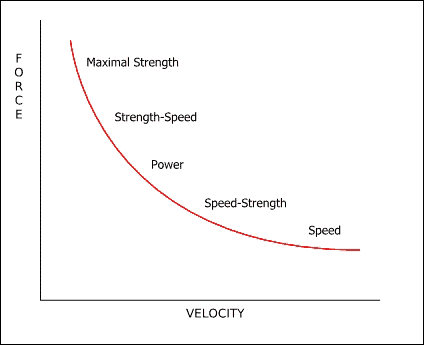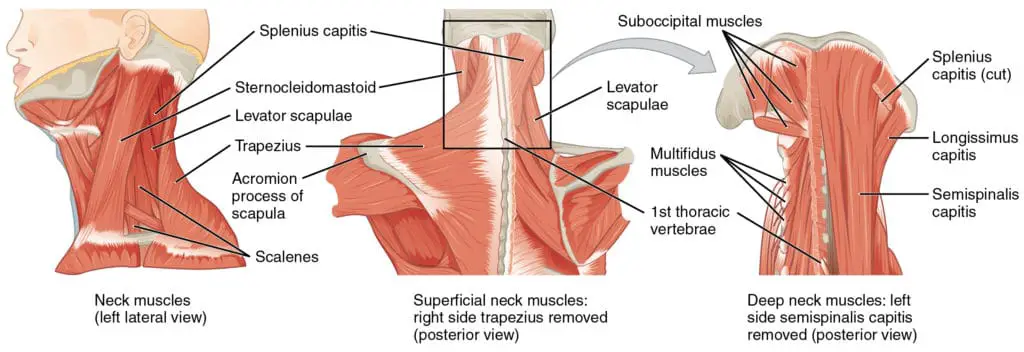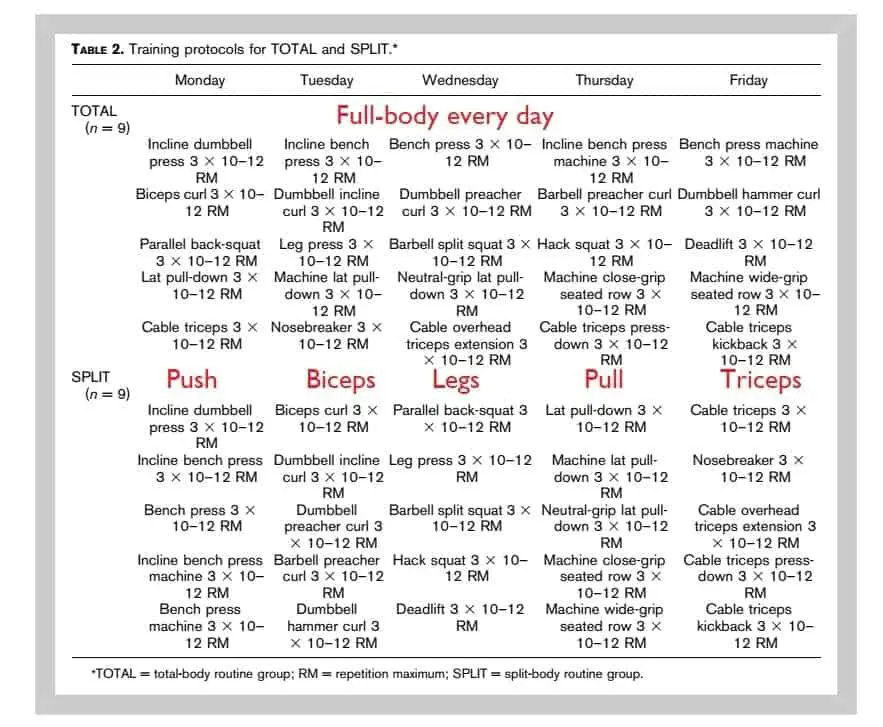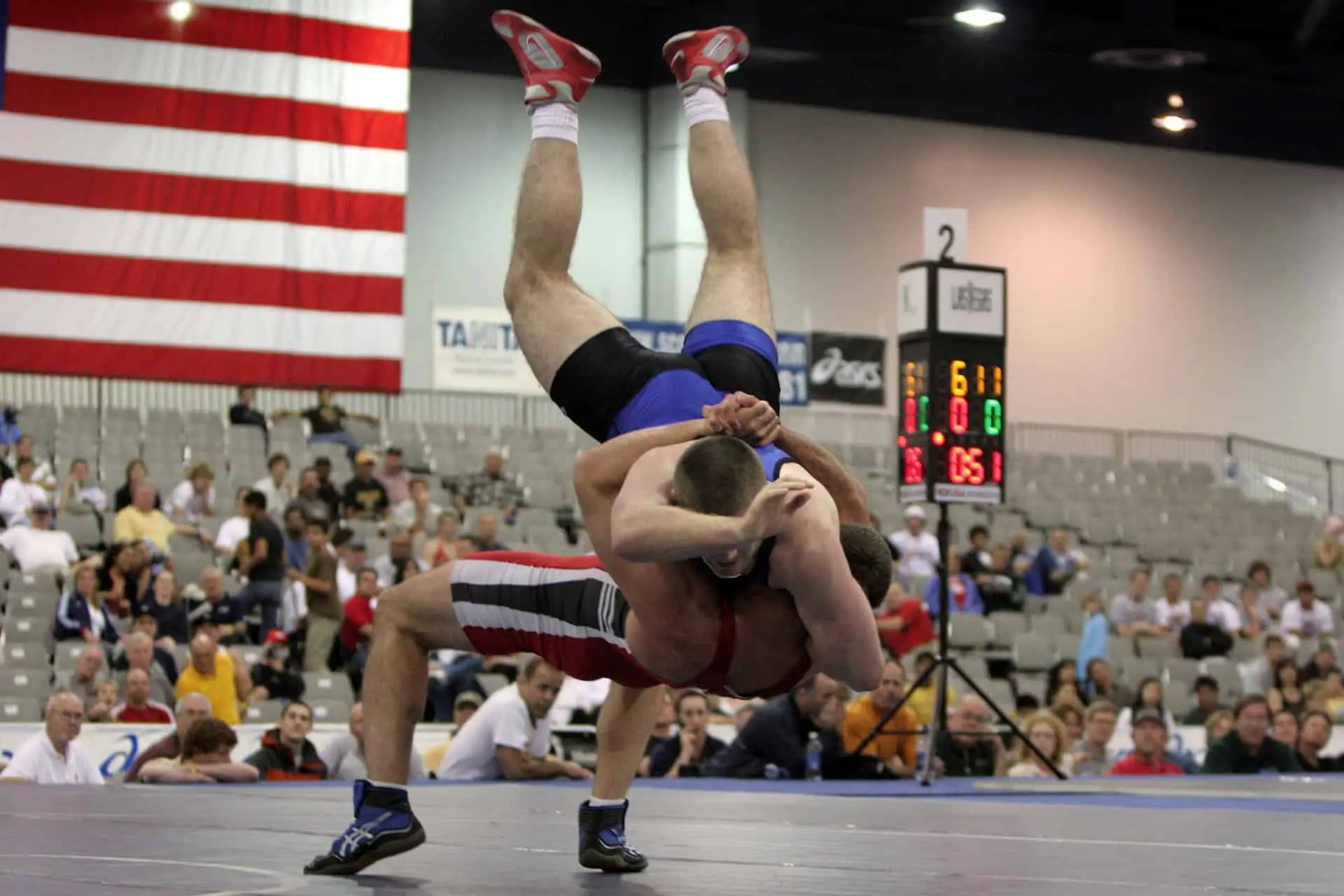Wrestlers, just like all driven athletes, are looking to grow their performance and smash their competition. There are a lot of guides out there, and many aspects of these can be useful.
This guide aims to answer any questions you may have by being concise about which muscle groups to focus on, how to be a better off-season wrestler, and improving the carryover when it’s time to compete.
FTD is supported by its audience. When you purchase through links on our site, we may earn an affiliate commission, at no additional cost to you.
Table of Contents
Get Strong First

One thing that all wrestlers should know is that power is a time derivative of work. It is the product of force and velocity.
Simply put, the stronger and faster you become, the more power you can generate within your weight class. This is important, and we’ll explain this more below.
The best way to perform better is to focus on exercises that increase those two factors. Being quicker than whoever you are grappling with can give you an edge in your defensive or offensive positions. As your overall strength increases, you’ll be more likely to control your opponent on the mat.
One factor often gets overlooked, lactic acid build-up when you are starting to get exhausted during mostly even matches. Your muscles fatigue quicker when they can’t clear the lactate as much as it builds up; this is known as your lactate threshold and can be improved with training.
The endurance of those muscles matters big time. Focusing on this aspect alone will help up build that threshold.
Trainers can often overlook one of the most classic workouts used to increase the durability of your anaerobic systems. Sprinting in fast and short intervals at a high rep rate can further help your body deal with lactic acid.
Sprints also can increase your overall physical fitness, as it is still a great cardio and HIIT workout.
The more conventional push-ups and sit-ups will also assist in dealing with your anaerobic conditioning. The most important thing to do during this section of the workout is to make sure you are giving your body around 2 minutes of rest between sets to ensure that your body is using its anaerobic systems instead of aerobic.
For strength training, there are many choices a wrestler can use to go about this. Focusing on specific areas is essential for this type of athlete. Upper body workouts should include some volume for the biceps, core, and neck muscles.
Your neck is used to escape any pins and helps keep you centered. A more muscular and well-developed neck in proportion with the rest of your developing musculature will help protect your nerves and spine.
Train Your Neck

If you have a reliable offseason training partner or don’t have a cheap neck harness, check out the video below. 👇👇
Your core primarily assists with lifts as well as giving you the flexibility and central power to escape pins.
Your biceps, of course, are the most useful in pulling an opponent and maneuvering others during a match. These different muscle groups need to be worked on their own, and each needs careful attention.
Bicep workouts are quite common, and most people who are focused on either increasing muscle mass tend to focus on the biceps. So you have a lot of options.
Wrestlers need to pull and move their opponent on the mat, so the best workouts are those that both increase muscular strength and endurance. We recommend a mix of different types and groups of repetitions.
Beginner Strength Routine
The beginner workout is simple, and we respect Mark Rippetoe’s knowledge and experience far too much, not to recommend his Starting Strength routine. This method focuses on compound lifts and developing maximal force with some strength speed.
I increased my squat from 80kg to 160kg in 6 months while staying under 65kg bodyweight with his low volume, progressive overload method.
I wasn’t training for wrestling, and although your goals will be to dominate your opponent, Coach Rippetoe’s routine tackles the fundamentals very nicely.
The Personalised And Phasic Approach
There’s no need to complicate things. However, you may be able to accelerate your progress if you split your 12-week weight training program into cycles of hypertrophy/strength for six weeks then power for another six weeks. But first, you should test your optimal rep range for muscle hypertrophy.
You may already know this intuitively, any sets of 5 reps or less may not stimulate your muscles at all. Whereas sets of 6-10 may crush you and give you DOMS for days.
Over time your muscles are likely to shift from slower type I fibers to more explosive type II fibers. This is something that you want in wrestling but not if you’re a triathlete.
If you’re already successful and your coaches have noticed you being more explosive and generating more power, your composition may already be skewed towards the fast-twitch type II muscle fibers.
You should always aim to push past your limits, and if you don’t, your competition will.
Sample 12 Week Weight Training Routine
High-frequency training is more effective compared to training each muscle group just twice per week. Therefore, try to aim for full-body training five days a week without significantly increasing your total weekly volume.
This will look like five sets of anywhere from 6 – 10 reps every day if you usually do 12 sets of each muscle group. You can modify the exercises below if you have any nagging injuries or lagging body parts.

The second 6-week training cycle should be used to focus on developing your power. This will help you maintain your strength while you’re able to move slightly lighter weights with more velocity.
Although you may not aim for equal volume with fewer reps per set, if this becomes too challenging and you find that you are overreaching, add in an additional rest day or two.
Inadequate training rarely gets in the way of a disciplined athlete, and the wrong recovery is much more likely.
Mixing in upper body muscle group workouts throughout the entirety of the 12 weeks is essential. Maintaining core strength will help keep some of the work focused on the other muscle groups you use during a match.
Get To The Core
Core strength is one of the best aspects to maintain while you are off-season. This also happens to be the hardest to maintain. Thankfully we have found some of the best workouts for that. We recommend sets of exercises like the ones below.
Using the ab wheel can be very helpful in increasing core mobility and ab strength. This workout is best done until you can maintain a broad range of movement with a completely stable core. Check out the video below.
The sliding push up can be instrumental in growing core strength. It begins in the standard pushup position. From here, you will need to spread your legs apart slightly more with your butt somewhat further in the air.
From this point, you can slide your hands apart as you are lowering down to a pushup and back as you rise back up. This can be done with additional tools to help your hands slide in the right direction.
The next workout we suggest to include in your routine is planks. This yoga-based workout helps maintain balance and push your core strength.
This workout begins by entering a pushup position. From their bring your arms together and hold yourself up for as long as you can.
The final core workout for wrestlers we recommend is also the most difficult. Start in the plank position; just lift yourself, make sure your feet are spread apart.
Lift one of your hands, and position the leg opposite of the hand used under your body and open it out to your side. This can then be repeated with the other leg and arm until tired.
Often Overlooked
Neck workouts shouldn’t be missed; thankfully, these are often some of the easiest! Train with a partner to add some resistance or use any cheap neck harness you can keep in your gym bag, ensure that it’s fitted securely to avoid injury.
Most of them involving a stretching period to make sure you don’t cause muscle damage. From there, you can begin simple things like holding your neck down for 30 seconds, then up for 30.
Any workout you can think of that includes some neck resistance (but not too much) will help you build flexibility and neck endurance. Remember to train your grip and incorporate dynamic stretching before each workout.
Overall for the 12 weeks, it is essential to include rest days and lots of variety. Remember to optimize your recovery by getting good sleep and limiting chronic inflammation as much as you can.
Happy grappling 😉
- Boost Your Performance. Take your workout to the next level with Hawk Neck Harness. Designed for neck training, our neck weight lifting harness enhances athletic performance, posture, and confidence.
- Built to Last. Gear up with our durable neck workout equipment. With 4mm-thick, double stitched neoprene and a 36" heavy duty steel chain, our neck harness for strength training supports up to 150 lbs.
- Lock In, Level Up. Master every rep with firm focus and robust neck support using our neck training harness. Adjustable straps ensure a solid and steady setup for all your intense neck workouts.


